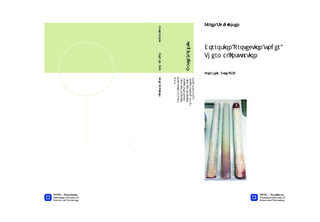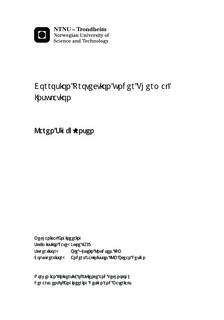| dc.description.abstract | Corrosion under insulation (CUI) is an extensive and costly problem for the petrochemical and chemical industry. Both good coatings to mitigate the problem and test methods to ensure the quality of these coatings are needed. In this thesis, four coatings; standard epoxy coating, epoxy phenolic coating, titanium modified inorganic copolymer (TMIC) and thermally sprayed aluminium (TSA), were tested for their ability to mitigate the problem. To simulate the CUI conditions, several test methods may be used, as there is no consensus on which method that best represents the CUI conditions. The cyclic pipe test developed by Halliday et al. [1] were used and evaluated in this work. In this test method, the coatings were applied at carbon steel pipes with outer diameter of 6 cm and length of 60 cm. Calcium silicate insulation covered by aluminium foil was wrapped around the pipes and this was placed in casseroles and put on hot plates. 30 cycles with cyclic temperatures and wet/dry conditions were performed. 1 cycle ran for 24 hours and consisted 8 hours of heating at 450oC followed by 16 hours of natural cooling at ambient temperature. Before and after each heating period, 1 litre of 1% NaCl solution was poured into the insulation.The results showed that best protection was achieved by the TMIC coating with no degradation up to 300oC. Second came the TSA with no degradation up to 190oC. The epoxy phenolic had the lowest temperature tolerance with blistering and poor adhesion at 160oC and failure by rusting and blistering at 220oC. The testing of the standard epoxy was not completed due to lack of time.The cyclic pipe test proved to be an overall good test method for comparing coatings for CUI protection. All the major problems as thermal cycling with high temperatures, wetting and drying period, intermittent immersion and thermal shock are included in the test. It is also relatively easy to set up and not very demanding concerning equipment. Some improvements could be made for the test method regarding more constant testing conditions between tests. These are:? A test set-up with a horizontally placed pipe with a heat source in one of the ends could be developed to create equal immersion conditions along the length of the test pipe.? To set additional fixed terms to minimize variations between tests and improve the temperature control. | nb_NO |

